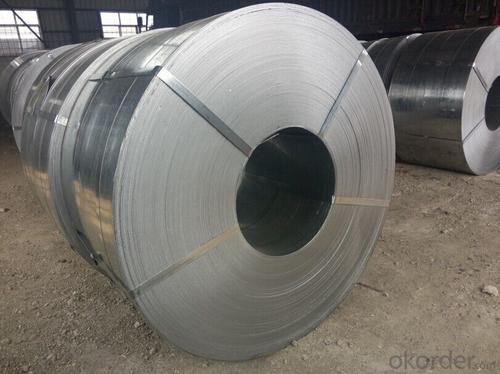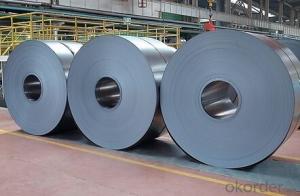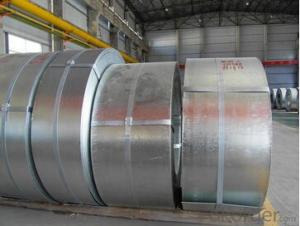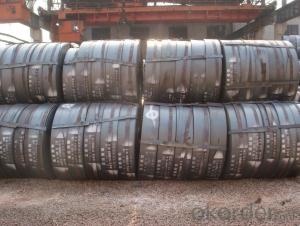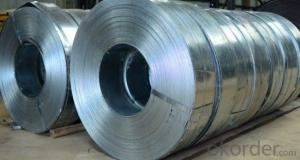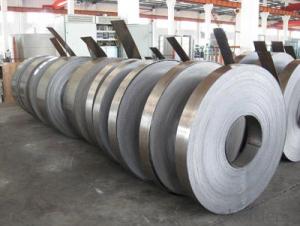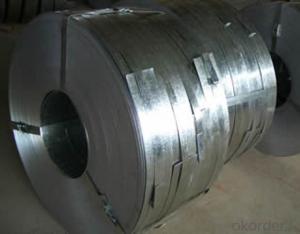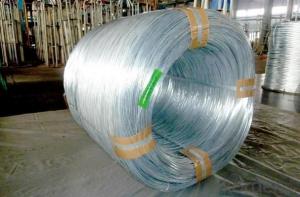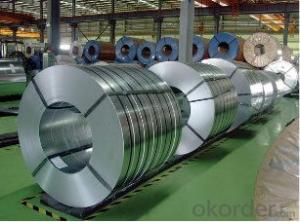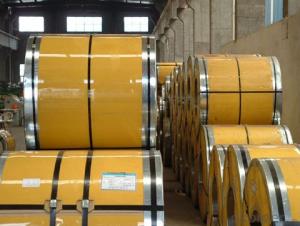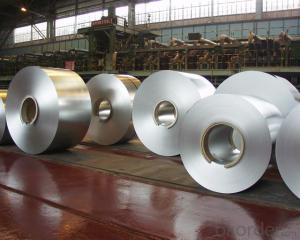Galvanized Steel Strip with High Quality-SGC340 600*2.5mm
- Loading Port:
- China main port
- Payment Terms:
- TT OR LC
- Min Order Qty:
- 50 m.t
- Supply Capability:
- 10000 m.t/month
OKorder Service Pledge
OKorder Financial Service
You Might Also Like
Galvanized Steel Strip with High Quality-SGC340 600*2.5mm:
Product Description:
Specifications:
1. Thickness: 2.5mm
2. Width: 600mm
3. Material: SGC340
4. ID: 508mm or 610mm
5. Spangle: Regular spangle or zero spangle
6. Surface treatment: chromated or no chromated; oiled or no oiled.
Advantages of Galvanized Steel Strip with High Quality-SGC340 600*2.5mm:
1. Uniform coating;
2. Strong adhesion;
3. Strong corrosion resistant ability
Usage of Galvanized Steel Strip with High Quality-SGC340 600*2.5mm:
1. Making pipes, like Greenhouse tubes, drinking water pipe, heating pipe, gas pipe and so on;
2. Used in automobile;
3. Used in construction;
4. Used in agriculture, fishery and so on.
FAQ of Galvanized Steel Strip with High Quality-SGC340 600*2.5mm:
Q1: How soon can we receive the product after purchasement?
A1: Within three days of placing an order, we will begin production. The specific shipping date is dependent upon international and government factors, but is typically one month-two months.
Q2: How do you guarantee the quality of our products?
A2: We have established an advanced quality management system which conducts strict quality tests at every step, from raw materials to the final product. At the same time, we provide extensive follow-up service assurances as required.
Q3: The prices are invoicing on theoritical weight or on actual weight?
A3: We can do it in both manners, according to the customers' request.
Images of Galvanized Steel Strip with High Quality-SGC340 600*2.5mm:
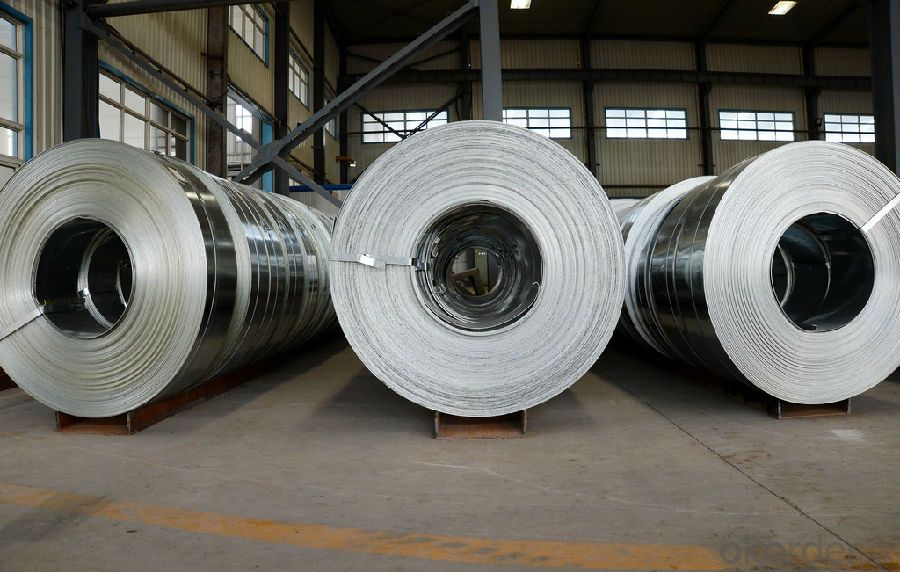
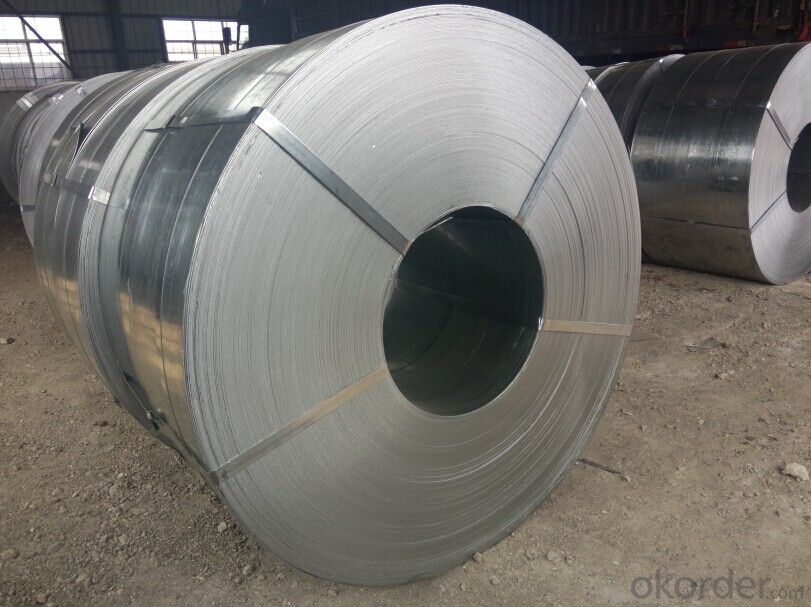
*If you would like to get our price, please kindly inform us the standard/material, specifications and quantity. Thank you very much for your attention.
- Q: How are steel strips customized for specific applications?
- Steel strips are customized for specific applications through a combination of various processes such as size reduction, surface treatment, and precision cutting. These strips can be modified to meet specific width, thickness, and length requirements, as well as undergo treatments like galvanization or coating to enhance their corrosion resistance or appearance. Additionally, specialized cutting techniques such as slitting or shearing enable the customization of steel strips to fit specific shapes or dimensions required for various applications.
- Q: Can steel strips be coated with protective coatings?
- Yes, steel strips can be coated with protective coatings. Coating steel strips with protective coatings is a common practice in various industries to enhance their durability, resistance to corrosion, and overall performance. There are several types of protective coatings available for steel, including but not limited to, galvanized coatings, powder coatings, epoxy coatings, and paint coatings. Galvanized coatings, for example, involve applying a layer of zinc to the steel strip through a process known as hot-dip galvanizing. This coating provides excellent corrosion resistance and protects the steel from environmental factors such as moisture and chemicals. Powder coatings are another popular option for protecting steel strips. In this process, a dry powder is applied to the steel strip electrostatically, and then it is cured under heat to create a durable and tough coating. Powder coatings offer excellent adhesion and resistance to abrasion, impact, and chemicals. Epoxy coatings, on the other hand, are commonly used to protect steel strips in harsh environments. These coatings are highly resistant to chemicals, moisture, and extreme temperatures. They provide an additional layer of protection to the steel, preventing corrosion and extending its lifespan. Paint coatings are also widely used to protect steel strips. These coatings can be applied by various methods such as spraying, brushing, or dipping. Paint coatings offer flexibility in terms of color options and can provide a decorative finish in addition to protecting the steel strip from corrosion and other damaging factors. In conclusion, steel strips can indeed be coated with various protective coatings to enhance their performance and longevity. The choice of coating will depend on the specific requirements of the steel strip and the environment it will be exposed to.
- Q: Can steel strips be used in the production of surgical implants?
- Yes, steel strips can be used in the production of surgical implants. They are often used as a raw material for manufacturing various types of implants, such as plates, screws, and rods, due to their strength, biocompatibility, and corrosion resistance. Steel strips are commonly utilized in orthopedic, dental, and reconstructive surgeries to provide stability and support in the body.
- Q: How are steel strips used in the production of aerospace components?
- Steel strips are used in the production of aerospace components for various purposes such as structural reinforcement, forming complex shapes, and providing strength and durability to the final product. These strips are often used to create brackets, fasteners, and other critical parts that require high strength-to-weight ratio and resistance to extreme conditions, ensuring the reliability and safety of aerospace components.
- Q: How do steel strips contribute to product durability in various applications?
- Steel strips contribute to product durability in various applications in several ways: 1. Strength and rigidity: Steel strips are incredibly strong and rigid, making them ideal for applications where durability is crucial. They can withstand heavy loads and resist bending or warping, ensuring the product maintains its shape and functionality over time. 2. Corrosion resistance: Steel strips can be coated with protective layers, such as zinc or other metals, to enhance their corrosion resistance. This prevents rust and corrosion, which can weaken the product and reduce its lifespan. The ability of steel strips to resist corrosion makes them suitable for various environments, including those with high humidity or exposure to chemicals. 3. Wear resistance: Steel strips have excellent wear resistance due to their hardness and surface quality. They can withstand abrasion, friction, and impact, which are common causes of wear and tear in many applications. By using steel strips, products can maintain their structural integrity and functionality even under harsh conditions. 4. Flexibility: Steel strips can be manufactured in various thicknesses, widths, and lengths, offering flexibility in designing and producing products. This adaptability allows manufacturers to tailor the steel strips to specific application requirements, ensuring the product is durable and can withstand the intended usage. 5. Heat resistance: Steel strips can retain their strength and structural integrity even at high temperatures. This property is particularly important in applications where products are exposed to extreme heat or thermal cycling. Steel strips can resist deformation, maintain stability, and continue to provide durability in such demanding conditions. In summary, steel strips contribute to product durability in various applications by providing strength, rigidity, corrosion resistance, wear resistance, flexibility, and heat resistance. Their properties ensure that products can withstand heavy loads, resist corrosion, wear, and tear, and maintain their functionality over time, even in challenging environments.
- Q: What are the common thickness tolerances for steel strips?
- The common thickness tolerances for steel strips vary depending on the specific application and industry standards. However, in general, the typical thickness tolerances for steel strips range from +/- 0.005 inches to +/- 0.020 inches. These tolerances ensure that the steel strips meet the required specifications and provide consistent performance in various applications. In industries such as automotive, aerospace, and construction, where precision and quality are crucial, tighter thickness tolerances are often required. In such cases, the tolerances may be as narrow as +/- 0.001 inches or even less. It is important to note that the specific thickness tolerances for steel strips can also be influenced by factors such as the manufacturing process, the type of steel used, and the intended use of the strip. Therefore, it is essential to consult the relevant industry standards and specifications to determine the precise thickness tolerances for a particular application.
- Q: What are the different edge finishes for steel strips?
- Some common edge finishes for steel strips include mill edge, slit edge, deburred edge, rounded edge, and sheared edge.
- Q: How are steel strips tested for surface roughness?
- Steel strips are tested for surface roughness using various methods and instruments. One common method is the use of a surface profilometer, which is a precision instrument that measures the height variations across the surface of the steel strip. The profilometer consists of a stylus or probe that is moved across the surface, and as it moves, it records the vertical movements or deviations. By analyzing the data collected by the profilometer, the roughness parameters such as Ra (average roughness) and Rz (mean peak-to-valley height) can be determined. Another method used for testing surface roughness is the use of a laser scanning system. This system utilizes a laser beam that is directed onto the steel strip surface, and the reflected laser light is captured by a sensor. The sensor detects any irregularities or changes in the reflected light, which can then be analyzed to determine the surface roughness. Additionally, visual inspection and touch methods may also be used to assess surface roughness. Skilled operators visually examine the steel strip for any visible roughness or irregularities, while the touch method involves running a gloved hand across the surface to feel for any rough spots or inconsistencies. Overall, steel strips are tested for surface roughness using a combination of advanced instruments, visual inspection, and touch methods to ensure that the desired quality standards are met.
- Q: What are the environmental impacts of steel strip production?
- The environmental impacts of steel strip production are significant. The process involves high energy consumption, which contributes to carbon emissions and climate change. Additionally, the mining and extraction of iron ore, along with the production of coke and coal, result in habitat destruction and air pollution. Steel strip production also generates large amounts of waste, including slag and mill scale, which can contaminate soil and water bodies. Overall, it is crucial to implement sustainable practices and technologies to mitigate these environmental impacts.
- Q: Can steel strips be used in kitchen appliances?
- Yes, steel strips can be used in kitchen appliances. Steel is a common material used for various components of kitchen appliances due to its durability, strength, and resistance to corrosion. Steel strips can be utilized for various purposes such as structural support, handles, hinges, or decorative elements in kitchen appliances.
Send your message to us
Galvanized Steel Strip with High Quality-SGC340 600*2.5mm
- Loading Port:
- China main port
- Payment Terms:
- TT OR LC
- Min Order Qty:
- 50 m.t
- Supply Capability:
- 10000 m.t/month
OKorder Service Pledge
OKorder Financial Service
Similar products
Hot products
Hot Searches
Related keywords



